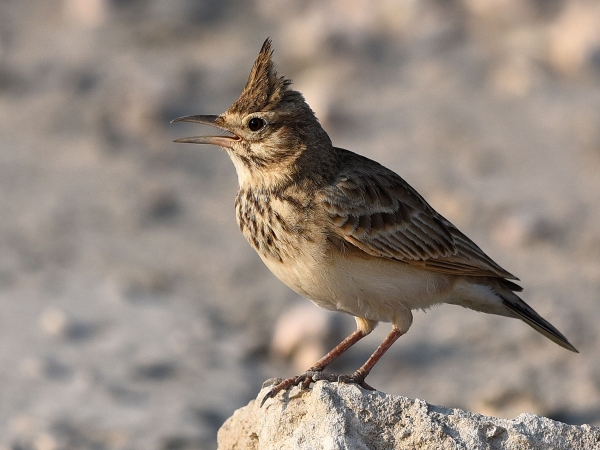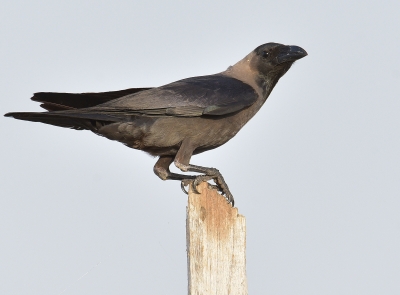
The Crested Lark (Galerida cristata) is one of the common resident and breeding birds registered in the Kingdom of Saudi Arabia. It can be found in all the Kingdom's villages and towns, namely in coastal areas. It is the second breeding bird commonly found in the Kingdom that became house to more than four million annually breeding pairs. It has an active presence in Harad.
Life of the crested lark
The crested lark is found in farms, in cultivated areas, in nearby deserts with shallow trees, in wastegrounds around villages, and in the cities and towns parks. The bird is mostly active during daytime. It feeds individually, in pairs during breeding seasons, or in small groups during winter.
It is one of the 550 bird species registered in the Kingdom, including 219 breeding birds, 280 migratory birds, fifty-one stray birds, and twenty-seven globally endangered species. The Kingdom is home to nineteen endemic and semi-endemic species of the Arabian Peninsula. Moreover, its geographical location between Eastern Asia, Europe, and Africa makes it one of the most important bird migration routes in the world.
Characteristics of the crested lark
The height of the crested lark ranges between seventeen and nineteen cm, with a weight between thirty-five and fifty g. The crested lark mainly feeds on invertebrates during the breeding season and on grains and parts of foliage plants during other periods. Crested larks feed while walking or running on the ground, namely upon digging holes in the sand.
Breeding of the crested lark
The crested lark is mostly a socially monogamous bird that lives in breeding pairs in specific areas. The female lark is responsible for most incubation tasks, while both male and female cooperate in making their nest and caring for their younglings.
The nest takes the form of a cup made of grass, small twigs, and roots. It is lined with fine grasses, hair, and occasionally wool or feathers. It is placed in a natural or ground-dug cavity. It is often concealed by a bush or a low rock usually located north of the nest.
The lark incubates three to four eggs over an incubation period of twelve to thirteen days. Younglings leave their nest nine to eleven days after birth and hide in a nearby area before flying fifteen to sixteen days thereafter.
Female crested larks are often subject to predation. As a result, male crested larks can outnumber females, where there would be more than four males for each female crested lark by the end of the breeding season. The crested lark is not a regionally or globally endangered species. However, its global population curve is decreasing while its regional population curve is stable.
Status of the crested lark
Globally, the crested lark is classified as a resident bird. It is found in most areas of North Africa, Europe, the Arabian Peninsula, Central Asia, India, and Korea. It can be spotted in a variety of colors, depending on the local circumstances. There currently are thirty-seven subspecies of the crested lark, including the Crested Lark Tardinata, found in the Arabian Peninsula, specifically southwest of the Kingdom, in Yemen, and the Sultanate of Oman.
Related quizzes
Related articles


